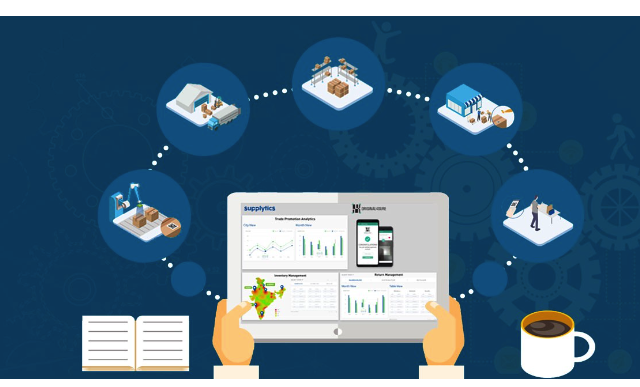Key Insights using SAP Analytics Cloud
Meet the Authors
By Ned Falk Hana Consulting Partners and Pradeep Penmesta KochaSoft
In today’s world, data is becoming more valuable day by day. For any organization, it is necessary to analyze their data before making any critical decisions regarding business operations such as finance, sales, supply chain operations and more. For enterprises with large amounts of critical data, but under-analyzed data, SAP Analytics Cloud has simplified and expedited data analysis.
What is SAP Analytics Cloud?
SAP Analytics Cloud (SAC) is an all-in-one cloud product offered as software as a service (SaaS) for the analysis of data. Business users of today need ‘self-service’ and ‘agility’ to outperform the competition and stay ahead. They need quick and easy access to information that can allow them to make swift, well-informed decisions, coupled with the ability to share the insights they’ve identified with both internal and external stakeholders. The older model of IT initiated/managed reports is, to a large degree, being replaced by businesspeople managing and creating their own reports, with a tool like SAC.
Most SAC customers go through 3+++ different phases of utilization for SAC, and then the roll out of these phases to more and more business areas.
Phase 1: Implement the business intelligence (BI) component. This includes the “Data Exploration” and “Visualization” of data, in graphical or tabular form using SAC “Stories”. Although many customers don’t realize it, this BI phase above includes some very sophisticated “Augmented Analytics” features where under the cover algorithms analyze data for you. In this phase your building “dashboards” for display on PCs’ tablets and phones.
Phase 2: Implement the Planning Component of SAC. After BI is significantly under way customers start to use SAC to perform complex business planning tasks, replacing complex networks of spreadsheets previously used by many to collect and input planning numbers in Sales and many areas of Finance and Cost Accounting.
Phase 3: Implement Predictive Analytics: Although complex algorithms are used in the BI phase as mentioned above dedicated project(s) are created to implement even more sophisticated predictive analytics. Using advanced algorithms with complex math under the covers SAC allows citizen data scientist to delve into predictive analytics. Tasks like figuring out the demographics of your best customers or seeing how the weather might affect customer turnout at your stores.
Phase +: Implement Digital Board Room: Although not really a separate phase the utilization the SAC’s component called Digital Boardroom enables the reuse of the BI presentations/dashboards built in phase 1 to run meetings organized by the supervisor to the CEO, complete with interactive chats and large screen presentations. No longer do admins need to copy data from various sources to power points and spreadsheets for presentations in meetings.
Phase ++: Implement Analytical Applications: As we mentioned above, in the BI phase above a SAC feature called a “Story” is used to present graphical and tabular data. Stories provide the ability to navigate data during an analysis using features such as drill up and down hierarchies, filtering, jumping and much more. Almost anyone that knows the data and can build a Microsoft PowerPoint or Excel spreadsheet, with some training can build a nice story. On the other hand, a separate tool in SAC called an “Analytical Applications” provides the next level of data presentation, but with the idea that a smaller team of “designers” build these applications and that they need a simple level of coding skills and some dedicated training. With an Analytical Application, you can add scripted (coded) logic to a dashboard. For just a tiny example, the same dashboard could be used as a simple version for the manager, and then with a button click be changed to hide the simple visualizations a show more complex one. Another example might be to dynamically change the dashboard based on the day of the month, with a different collection of options supporting “end of month close” analysis in finance.
Phase +++: Implement Advanced Predictive Analysis applications: (See “ Powerful predictive tools are built in” Below in the Key Advantages section for more details)
Licensing/Packaging options for SAC:
SAP is pushing its cloud first but not cloud only strategy. This is because there are so many existing SAP customers using on premise software options. In the area of data analysis on premise reporting included tools like SAP Business Objects (BOBJ), and the SAP BW Bex reporting tools. Even SAP’s ERP system S4/HANA provides some imbedded reporting options. SAP’s goal is to push people to the cloud and to use SAC for data analytics in gradual way by providing a compelling advantage to SAC. As part of this strategy the SAC Embedded Edition (what I call SAC light) is provided “free” to deliver basic reporting features to SAP components such as SAP Success Factors, Fieldglass, S/4HANA, C/4 HANA and Concur. In addition, the Cloud cousin of SAP BW, SAP Data Warehouse Cloud is deployed with a SAC Embedded Edition. This displays SAP’s blatant idea to show you for free how great even the basic features of SAC are and thus push your move to license the full SAC at different levels to get all its features. In addition to the concept of the free imbedded version, with limited features, SAC is also licensed by user with different costs for the use of different features. This means, as an example, the license to enter a planning number for sales for a given month is a lot lower than the license to set up the whole planning story.
What are the Key Advantages of SAP Analytics Cloud?
As we mentioned previously cloud based software deployed as a service is great from the perspective of your IT department, as they don’t need to maintain the infrastructure of servers and worry about software updates. SAP does that. However, if it was not compelling the businesspeople would not direct IT to move away from what they currently use. All modern analysis tools do interactive filtering and navigation of the data, and most have good graphical options, but on top of all that here are some great benefits of SAC (just a small sample of features we really like).
- The ability to access data for reporting from nearly anywhere it exists. This includes SAP sources (BW, BOBJ “Universe”, HANA, S/4 HANA, SAP Data Warehouse Cloud and Non-SAP sources, google, other data bases and even flat files
- Depending on the data source, it can be accessed live (not loaded/replicated into SAC cloud) or it can be prepared/massaged then loaded into the SAC cloud.
- Data can be blended (merged from different sources) and presented in the same story on the same chart or on the same table. For example, data originally sourced from a shop floor spread sheet with up-to-date production stats could be linked with ERP data about these same orders and presented in the same table or chart in and Sac story.
- With a simple click SAC’s Smart Insights or Smart Discovery feature can do in seconds what a good analyst might take days to figure out. For example, if defects were up from the prior month, you could click the chart for the current month and SAC would analyze all contributing data points was it because an of a specific plant, a shipment point or a specific employee. The process using traditional analysis tools would be to manually plot each factor in relationship to defects and see which one had an unusual change. You would need a good analyst to do that deep dive into the data.
- The Dashboards (Stories) can be easily exposed to Mobile IOS and Android.
- Powerful predictive tools are built in. In addition to the previously mentioned Smart Discovery and smart insights. SAC comes with a suite of very robust predictive capabilities. Most large companies have a team of PHD Data Scientist working on predictive analysis. This is partly because if you are a novice you may not realize you are generating terrible predictions! Although, SAC does not prevent ignorance, it has some very special features to help guide the “citizen data scientist” to build valid predictive models. With one use case the goal was to predict the number of hot dog vendors to have open at a baseball game, based on the chance of rain and the opposing team. Sunny days against the archrival have many more fans than a rainy day against the worst team in the league. Thus, more hotdogs!
Common Pitfalls with SAP Analytics Cloud Implementations
However, despite its advantages experience shows that customers go through various issues in their implementation of SAC. A few from our experience a few are listed below:
The first set of issues are tied to the fact that IT is often not running the project! Although we used that as an advantage above, some core decisions and guidance is needed before you let the businesspeople dive in.
- Decisions need to be made on whether to replicate or access live the data needed for SAC presentation and Analysis.
-
- When the decision is made to replicate and transform data and load it from the existing system to SAC, additional decisions are needed. For example, does each data model in SAC maintain its own master data (customers, products, etc.) or is this master data “public” meaning shared between data models. Decision here might show up in discrepancies in one report vs another as the data basis would be different.
- When you access live data best practices/training need to be discussed to filter data for acceptable performance.
- With the ability to share and easily output the data as a PDF the use of the data security features “who can see what” needs to be considered at the beginning of the project. When data is replicated to SAC, it is SAC security only that is involved. When data is accessed live the user id that is used to access this data is checked in the live source adding even more complexity. In addition, there are security issues involved in the SAC’s ability to broadcast stories via Email to consider.
- Decisions and set-up need to be made for the creation production vs development environments and to which backend systems these SAC systems are connected to. Following SAPs guidance here in proper life cycle management is critical to avoid issues in the longer term, before the users dive in!
The second set of issues involve the creation of stories and analytical Applications. Some of these issues cause rework or at minimum less optimal implementations.
- The temptation is to develop fancy and complex graphics and not easy to use dashboards to help users make decisions. To this end, it is generally best to find out what are the key metrics the user/department are measured on and place these metrics as a Key Performance Indicators on the first page of a story. Clicking the KPI might take you to more graphical presentations of the data on supporting pages.
- Failure to use SAP or Customer Created templates. Using a template helps create a look and feel to reports that cross from one report to the next. This is important because 1 user will use multiple dashboards created by various people. A template makes it easier for them to dive into the data and not need to get acclimated to the look and feel of the story itself.
- Decisions/ training on which types of story pages should be used. Only “responsive pages” are optimized (responsive to screen size) for mobile devices, not so if users dive in to build stories with grid or canvas pages without thinking of the user and how they will access the story then rework is needed! In SAP Analytics Cloud, all the stories can be shared with other users and can be organized into an SAP Digital Boardroom agenda to present to major stakeholders.
- Proper/extensive use of hierarchies are needed in most all data presentations. This gives users the flexibility to drill down to lower level summaries in the Reports. Hierarchies based on time (day, week, month and year for example) are almost “free” as they are provided by SAP. Others such as, product, cost centers etc. must be defined in advance. In the case of parent/child hierarchies they can be built into the shared master data concept we mentioned above.
Summary:
SAC is a very powerful suite of analysis tools for SAP and non-SAP data. The software as a service (SaaS) delivery model and the ease of use makes it easier to minimize the role of IT vs traditional reporting tools. Yet proper involvement of IT and consultants and their role the landscape set up, end user training, security and best practices will ensure a successful SAC implementation.










